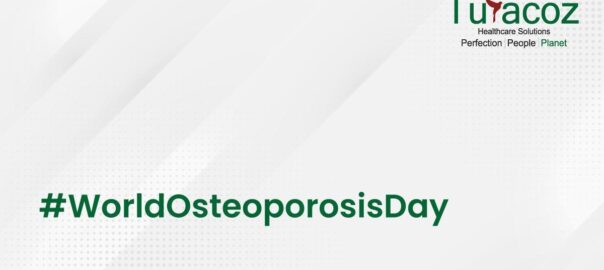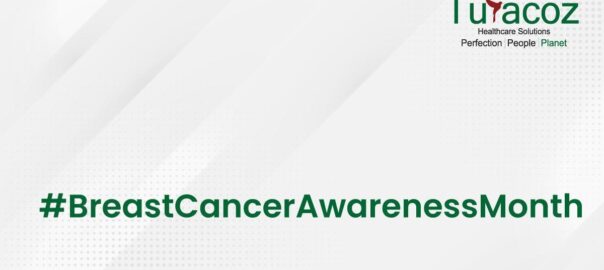Knocking out Triple Negative Breast Cancer: A new paradigm in treatment
Triple negative breast cancer (TNBC) are the subtypes of breast cancer that are generally diagnosed based upon the presence, or lack of, three “receptors” known to fuel most breast cancers:
- Estrogen receptors (ER)
- Progesterone receptors (PR)
- Human epidermal growth factor receptor 2 (HER2)
These receptor proteins are the “eyes” and “ears” of the cells, receiving messages from substances in the bloodstream and then giving instructions to the cells. The most successful treatments for breast cancer target these receptors.
About 10-20% of breast cancers test negative for both hormone receptors and HER2 in the lab, which means they are triple-negative.
Triple negative breast cancer
- Tends to be more aggressive than other types of breast cancer
- Tends to be at a higher grade than other types of breast cancer which makes them bear less resemblance to normal, healthy breast cells in their appearance and growth patterns
- Cancerous cell type is mostly “basal-like” which can be linked to the family history
Hormonal therapies and HER2-targeted therapies work to interfere with the effects of hormones and HER2 on breast cancer, which can help slow or even stop the growth of breast cancer cells. A triple negative breast cancer diagnosis means that the tumour is oestrogen receptor-negative, progesterone receptor-negative and HER2-negative, thus giving rise to the name “triple negative breast cancer.” Since hormones are not supporting TNBC growth, the cancer is not likely to respond to hormonal therapies, including tamoxifen, Arimidex, Aromasin, Femara, and Faslodex. Triple-negative breast cancer also is unlikely to respond to medications that target HER2, such as Herceptin or Tykerb.
On a positive note, this type of breast cancer is typically responsive to chemotherapy. Because of its triple negative status, however, triple negative tumours generally do not respond to receptor targeted treatments. Depending on the stage of its diagnosis, triple negative breast cancer can be particularly aggressive, and more likely to recur than other subtypes of breast cancer.
New therapies in TNBC-management
- Targeting androgen receptor in TNBC
Triple negative breast cancer is a heterogeneous disease composed of multiple subtypes and oncogenic drivers, including a subtype that may be driven by androgen receptor (AR) signalling. Enzalutamide is a potent AR -inhibitor, which significantly improves optimal strategy in metastatic castration-resistant prostate cancer and is currently being developed for patients with breast cancer who have an androgen-driven gene signature.
The AR pathway is a new target in triple-negative breast cancer in the androgen molecular subtypes. Clinical trials in molecularly selected patients should be designed to explore the combination of enzalutamide with other targeted agents such as PIK3CA (phosphatidylinositol-4, 5-bisphosphate 3-kinase catalytic subunit alpha) inhibitors. Enzalutamide may represent a novel therapeutic option in AR-positive patients who would otherwise receive cytotoxic chemotherapy.
- Designing nanoparticles to counter TNBC
To overcome resistance for chemotherapy in cancer patients, nanoparticles have been engineered that carry the cancer drug doxorubicin, as well as short strands of RNA that can shut off one of the genes that cancer cells use to escape the drug. This “one-two punch” disables tumours’ defences and makes them much more vulnerable to chemotherapy. The new nanoparticles will target a protein found on the surface of triple-negative breast cancer cells and will help to change that. The nanoparticles have three components: a core filled with doxorubicin, a coating of short interfering RNA (siRNA), and an outer layer that protects the particle from degradation in the bloodstream.
Doxorubicin is already used to treat breast cancer and other cancers. It kills cells by damaging their DNA, The researchers based their nanoparticles on the drug known as Doxil, which is packaged in a liposome, or fatty membrane. To improve Doxil’s effectiveness, the researchers combined it with another type of therapy known as RNA interference (RNAi), which uses very short strands of RNA to block the expression of specific genes inside a living cell. They used a technique called layer-by-layer assembly to coat the Doxil particles with one layer of siRNA mixed with a positively charged polymer that helps to stabilize the RNA. This layer contains up to 3,500 siRNA molecules, each targeted to block a gene that allows cancer cells to pump the drug molecules out of the cells.
One of the major challenges that researchers had faced in developing RNAi for cancer treatment is getting the particles to survive in the bloodstream long enough to reach their intended targets. To overcome this, they developed the nanoparticles with an outer coating of hyaluronic acid. These molecules absorb water, allowing the nanoparticles to circulate in the bloodstream undisturbed.
Hyaluronic acid also helps to target the particles to the tumours by binding to a protein called CD44, which is found in great abundance on the surface of triple-negative breast cancer cells.
Turacoz Healthcare Solutions as a socially responsible company spreads the word and awareness and looks forward to collaboration or associations with other agencies/companies with similar goals and aspirations. We have a skilled and competent team of medical writers, clinicians, researchers and biostatisticians. Our clients include major pharmaceutical companies, hospitals and healthcare professionals. Our experience has been in supporting publications, creating regulatory documents, conducting observational studies, designing and creating for print and digital marketing as well as customizing sessions on medical writing.




